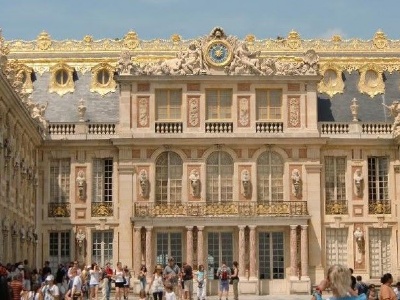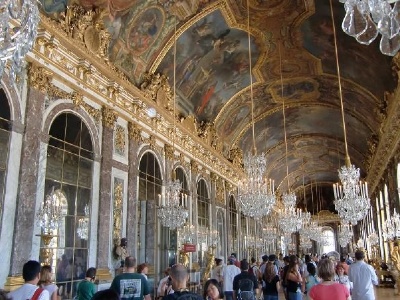Versailles
Versailles is located less than twenty kilometres southwest of Paris and is best known for the castle that the French kings Ludwig the XIV, XV and XVI lived in. The latter was forced to flee in connection with the French revolution of 1789. But it was also in the castle’s Hall of Mirrors that the Treaty of Versailles was signed on June 28, 1919 (the fifth anniversary of the murder of Franz Ferdinand). The Versailles treaty was part of a major peace conference that took place in Paris during 1919. The treaty of Versailles consisted of 440 articles in which the German war debt was established. Germany was sentenced to a huge war reparations to the victorious powers (France, Britain and the United States), lost several territories and all colonies, heavily reduced army (100,000 conscripts, 1,000 officers, and, small fleet and no air force). The aim was to neutralise Germany militarily and economically so that it could not pose any future military threat. But this turned out to be the opposite. The fact that the signing was placed in the Hall of Mirrors of Versailles was no coincidence, it was there that the German emperor Wilhelm I was crowned king of Germany in 1871. German unification was a consequence of Prussia’s victory over the Second French Empire in what is called the French-German war between 1870 and 1871.
Current status: Preserved with museum (1998).
Location: 48° 48 15.85 N, 2° 7 23.38 E
Get there: Commuter train from Paris.
Follow up in books: Henig, Ruth: The Origins of the Second World War, 1931-41 (2005).


There is nothing in the Hall of Mirrors (or the rest of the castle) that informs anything about the Treaty of Versailles. This may seem strange because the Treaty of Versailles laid the breeding ground for a revanchism that made Hitler possible. The focus of the museum is excluded on the time of the French kings and an emphasis on the magnificent design and splendor of the castle. The Castle is one of Paris’ most visited tourist destinations.